|
In the coming weeks and months (perhaps forever) I'm going to take a different approach to game reviews. Rapid Reviews, as the name suggests, is a set of quick, concise reviews of several video games. Here, in part 1, I have games ranging from iOS to PS4 (oh, and Breath of the Wild for the Switch). Hyperlight Drifter - PS4
Drenched in the warmth of 80s sci-fi synths I breath in the nostalgic, minimalistic visuals and paint in the details with my mind. 9/10 The Walking Dead: A New Frontier - iOS "Now I am become" Telltale, destroyer of batteries. It lacks any real improvements from the previous iterations, and still suffers from performance and audio mixing, in addition to battery draining like a energy thirsty vampire. The gameplay remains overly simplistic for my taste. The writing shines, and only occasionally suffers from “catch all” responses and animations that don’t always match with your choice in words (e.g. I just made a choice that doomed a character from finding “her baby”, and seconds later she is smiling like a smitten teen). 6/10 The Legend of Zelda: Breath of the Wild - Nintendo Switch Yes, this game is as good as the hype. Yes, the horses are a little wonky, but if that’s the biggest critique I can think of then I’m really digging for negatives. The best parts: Exploration is always rewarded, whenever I think “maybe I can…” the answer is always yes, and it’s extremely well polished. Great DLP too. 10/10 Super Mario Run - iOS I ran. I had fun. I beat the levels. I collected all of the colored coins. Then I uninstalled, feeling satisfied. 7/10 Mobius Final Fantasy - iOS My 10 minute experience: “What the hell is going on here? Never mind, this is stupid. I quit”. 2/10 Sword of Xolan - iOS 2D retro side-scrolling goodness. Just, not greatness. 6/10 Goblin Sword - iOS Refer to Sword of Xolan review. 6/10
0 Comments
 Amir Rajan is the creator of A Noble Circle, adapter of the #1 hit iOS game A Dark Room (originally created for the web by Michael Townsend), and creator of the prequel to A Dark Room: The Ensign. His games conjure deep, swaying, and often conflicting emotional responses in the players through the use of original storytelling techniques. The worlds he creates are visually simple, yet intensely profound and complex. Today we chatted about his experiences as an indie developer, his thoughts on his projects, another prequel to A Dark Room, and his next game Sasha. Brian: What I found to be so striking about my experience with A Dark Room was the way the progression of the experience made me feel compelled to push forward despite the slow but steady realization that the community in the game, the community I started and oversaw, was being crippled by my advancement (literally enslaved). As more people joined my village, my resources expanded, and more features were unlocked, the stronger the urge was for me to drive ahead. It reminds me of how, in real-life, when people gain status and wealth in the world, they start to lack sympathy for those around them, blinded by their own ambitions. In short, the feeling of guilt was present, but it was overshadowed by my desire for growth and exploration in an expanding universe. Was this part of your intent, to have users experience these types of emotions? Knowing that this made some people quit the game, does that feel like a success for having evoked such strong emotions? Amir: The game started as a web game and I (I'd like to say) "re-envisioned" it to a mobile medium. The web version didn't have any of the builder commentary or the slave transition. The builder was simply an NPC that was used to build stuff. Mentally I really connected with the builder, and wanted to answer my own questions: Who was she? Why was she helping me? So the emotions in the game were definitely deliberate and vocalized through the builder. It's funny actually, someone reached out to me on twitter about the slaves transition and how "it wasn't his choice". He was pretty angry about it. His Twitter profile background was that of Fallout New Vegas, where you can literally [be] part of a slave driving army. I think the emotions are exasperated by the fact that there aren't any pictures. In fact, these kind of emotional responses (specifically not having control) were what drove me to create the moral events in The Ensign, where you had a direct choice of whether you would "take food from the family" or not. ...the emotions... were...deliberate and vocalized through the builder. 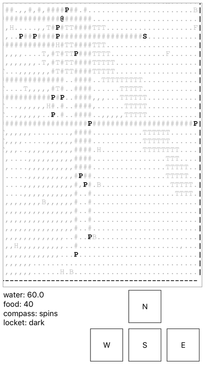 Brian: In A Dark Room (and likewise in The Ensign), the player has minimal knowledge of what the game is before starting. You take it so far as to only have one screenshot in the App Store, and it is of the very start of the game. Doing so doesn't spoil, but rather, excites attention and curiosity. Do you think that this sense of curiosity is what drew people in? Likewise, do you think it may have scared others away? Amir: Yes on both accounts. Michael and I did that deliberately so that the experience wouldn't be spoiled. After we hit the number one spot, and did an update to the game, [one] of the people on the Apple app approval process actually rejected our update because our description was "too short". I was really, really pissed about that, but we got it overridden and [were] allowed to update. It's tough balancing the "business" aspect of selling games, but we had faith that word of mouth recommendation would trump a long drawn out sales pitch on our app description page. We have a few accolades on there now. Still trying to find a good balance. [Having] good reviews certainly helps. Brian: What did it feel like to see A Dark Room hit #1 in the App Store? Did you ever think it would gain such popularity? Amir: When it hit the number one spot I was in complete utter shock. Definitely was not in a good state of mind, surprisingly. This expert from my blog explains it well: "This is the best way I can describe what I’m feeling right now: I’ve bought a lottery ticket, and the lottery commission has revealed 5 of the 6 numbers. And so far, I’ve gotten those 5 numbers right. I know I’ve got at least the winnings for those 5 numbers in the bag. But now I’m waiting for the 6th number… that jackpot number that changes your life forever. The lottery commission hasn’t revealed the 6th number yet, they haven’t even told me when they’ll show the 6th number. So I’m stuck in this weird limbo, where others see success and all I can do is temper expectations, be “responsible”, and move forward as if that 6th number will be wrong…. still number 1, just checked." I didn't sleep well for almost a month. Every hour or so I'd wake up and see if I were still number one. Still never got used to it When [A Dark Room] hit the number one spot I was in complete utter shock...I didn't sleep well for almost a month. Brian: I can only imagine what that feels like. Amir: Yea, we aren't prepared for that kind of success. When all was said and done Michael and I made about 700k that year we hit #1. 200k during that 18-day period at the number one spot. The rest was long tail trickles. Sadly, after taxes, Apple’s cut, and splits…both of us came away with about 270k. So that part was also not fun to realize. [I] was able to buy a house and pay it off though ^_^. Now I live mortgage free and don’t need to chase the mighty dollar so much anymore.  Brian: You spoke to some of the differences between the original web-based version of A Dark Room in the in-game commentary. Which difference did you find to be the most critical for the mobile experience? Amir: Pacing and the builder's commentary/storyline. I felt that's what put the game over the top. The mobile version is about 3 times faster than the web version. The game is a bit more challenging too. The DPS for soldiers, snipers, and feral terrors was nearly doubled in the mobile version... rage inducing I'm sure. I didn't expect the builder's interactions would be so powerful. But I do feel that's what "made" the game…Your thoughts on this? Brian: Pacing is so key in gameplay, and I find that in a mobile experience players would have struggled with a slower pace. As for the difficultly, I actually found it to be rather well balanced, but I tend to enjoy a bit of a challenge. For me, "dying" wasn't too frustrating, but more so, I blamed myself for venturing too far, too soon. Amir: The Ensign was definitely an extension of that "your fault" mentality. I wanted to make sure it was 100% fair. And yea, the early moments of the game when the forest opens up was key. Didn't want people to play for 30 seconds and leave a bad review. That plus the ability to pick it up, play a little bit, then put it back down was extremely important too. 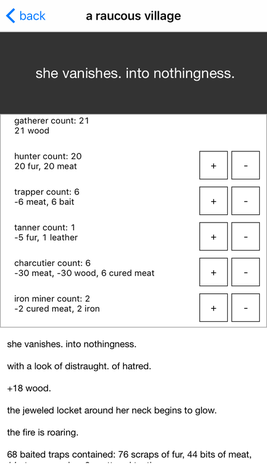 Brian: A Dark Room starts with darkness when you meet the girl, and comes full circle with darkness returning when the girl leaves. It’s a powerful, emotional moment in the experience, and for me, a point where everything felt like it was crashing down and at the point of no return. This isn’t a question. Amir: The fire going out when she left was deliberate. Not sure how many people caught that. Brian: You mentioned how you have never actually met Michael Townsend, the original creator. Do you think you two will ever meet? Amir: If Trump becomes president I may move to Canada. Brian: Not a bad idea. Amir: He said I'm welcome to his couch :-) Hopefully we'll meet soon, but definitely haven't met yet. It's on my bucket list ^_^ Do you find it weird that we haven't met? Maybe it's poetic that we never do :-P Brian: Actually, not really, not in this day. I collaborated with an artist on a web-based project I created, and we haven't met yet. We follow each other on Instagram though. Amir: Cool, cool. The composer I [worked] with for ANC is in Brazil. Haven't met him either. But yea, I agree with you. Don't find it too weird personally. Brian: In playing A Noble Circle and The Ensign, there is a clear, anti pay-to-win, in-app purchase message. In my opinion, in-app purchases, for the most part, replace what was once the designed challenge of a game into something that is now constructed, often purposely, to be purchased for the sake of completion. Which, in turn, taints the experience, removing the fun and entertainment elements for something that feels like it is run by finance people instead of creative folks. What are your thoughts on the direction mobile games have long been heading and do you foresee a backlash? Amir: I've struggled with this myself. I'm hoping there is a backlash... but it's unlikely. Premium games are a "lost cause". I quoted it because I don't think AAA will go that route. As for indie game devs, it may provide an opportunity to thrive (since we aren't competing with shops like EA). And we also don't need as much money either. I'm happy netting $170 a day. And can live comfortably off of that for the foreseeable future. But I do want to build a culture of "gifting" games and "free to start" games like POTUS and Kung Fury do that very tastefully. So my next game might be "free to start". And maybe ANC will become "free to start" too. You may have noticed that ANC - Prologue is a free offering. But I'm not ready to jump ship yet. We'll see how this year goes. Sasha, my next game, will be about "unrequited love”. 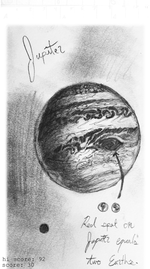 Brian: From A Dark Room to A Noble Circle it appears that a strong motif of yours seems to be a world that is visually simple, yet with an underlining complexity of somber emotions. And these emotions and layers of details get richer as the player progresses further, learning more of the world around them. What attracts you to this style of gameplay and this form of story telling? Amir: I think it works well given the current mobile landscape. Given that most games do exactly the opposite of what I'm doing. When I was a kid, I wanted to get into building video games, simply because it was a way to share an experience. Still remember the shock when Aries died in FF7 (spoiler alert). I feel I have a knack for distilling an experience down to its essence. Which works well for me since I don't have the resources to build a fully 3d or gorgeous 2d game. Only so much one person can do. When I start working on a game, there is a central emotion theme in mind. For ADR it was "the feeling of loss" (specifically the builder). For The Ensign, it was "cognitive dissonance", that feeling when you go against your ideals. For ANC, it’s "a rush of awe". Sasha, my next game, will be about "unrequited love”. Brian: I’ve released a lot of free custom maps and levels for first-person shooters, so I can relate to the notion of creating something primarily by yourself. What motivates you when you are devoting countless hours to your craft, knowing it may yield little to no money (what if it gets lost in the App Store abyss)? Amir: [I] always worry about how long my philosophies will bare fruit. So far I'm keeping my head above water. My general ideals is that I only want to build things that I myself would play/buy. I've been lucky (very very lucky) in finding an audience that operates on the same wave length that I do. There are 80+ million iOS devices out there. If I can capture even 0.01% of that in perpetuity [then] I'm happy. Cause I get to do exactly what I want to do: create. And yes, I've been called pretentious multiple times XD (I even make fun of it in ANC). So, in short. I'll keep doing it until the well dries up. Then I'll figure things out then. [I] just don't want to sacrifice my ideals too much. I've been called pretentious multiple times. Brian: While A Noble Circle has a similar visual and thematic style to that of A Dark Room and The Ensign, it differs greatly in terms of gameplay and the sounds that are the backbone of the experience. What inspired you to explore this style of gameplay? Amir: Geometry Dash. Such a fun game! That and it was a spark of inspiration from creating a virtual Go board. When you placed a "stone" on the board. I wanted to capture a sound that would "do the move justice". You get a nice "click" on a real go board, but in a digital medium I wanted to do something different. So it would randomly play a note from a pentatonic scale. You could almost make music while playing the game. So that's when I decided to take the rhythm based idea, plus the random music generation, plus Flatland and Ayn Rand's Anthem and put them together. Brian: At the end of A Noble Circle, I just bounced around for a while. At first, because I wanted to see if there was more, but then later, just to enjoy the sounds and music I was producing. Amir: You wouldn't be the first :-) Have you seen this video? Brian: That's...incredible. Amir: I made a musical score, and created a small AI to play the musical score for me. Just a silly little Easter egg. I wonder if anyone will actually try to compose the "perfect" piece. Would be cool if someone did ^_^ Brian: I want to circle back to your next game, Sasha, and the theme of “unrequited love”. What can you tell me about it? Earlier you mentioned the composer for A Noble Circle that you collaborated with, Rafael Langoni Smith. Will this project involve others as well? Amir: Not sure about collaborations yet. It's barely in pre-production. But I wanted to explore the idea of loving something that doesn't love you back. In this case Sasha is a Tamagotchi style character. Almost an OS that you take care of. Things don't go as planned toward the end of the game let's say :-D ...Sasha is inspirited by Notch's game, Drowning [in Problems]. He was able to convey a narrative without explicit "cut scenes" or story line elements. It's really amazing. I wanted to explore the idea of loving something that doesn't love you back. Brian: Are you envisioning a 2D, black-and-white world like the previous titles? Amir: Yep, I'm envisioning a B&W canvas. Sasha will be fully animated though. I think I can swing that (given that it's just one character). She may end up "making" mini games for you too. Parts of the progression will definitely be inspired by Drowning though. So I'd expect a similar game mechanic to further the story. Brian: One of the things I truly love about your games is the minimalist details in both the visuals and descriptions, because this forces me, as a player, to fill in those details, to wonder, to be curious, to be eager to learn more, and to decide for myself what the meaning is. Am I an alien? Is this my world? What does this deserted town look like? Should I feel bad for these people? Are the defectors crazed like zombies or just disgruntled? Is the dusty path a post-apocalyptic wasteland? Again: not a question. Amir: I hope The Ensign helped fill in those details a bit more. The Builder (prequel to The Ensign) will explore the relationship between Builder and Admiral. Brian: If you had unlimited resources, time, and budget, what would you build? Amir: I'd do a MOBA. Where players are like those from Dark Souls. So emphasis on swordplay, parries, etc. So stick a level 1 DaS character in the game and "go". Then you can level up to 120 by the time the game is over. Of course level would be faster :-P No one has a specific role, and you grow into the role you want to play. I'm addicted to StarCraft and LoL by the way. I tell my wife to hide my mouse during the week so I don't play it all day. The Builder (prequel to The Ensign) will explore the relationship between Builder and Admiral. Brian: This next question may sound crazy, considering your games are so beautifully packaged, feeling so complete in their simplicity, structure, and story…But do you ever think about making The Ensign into a larger, longer, more expansive experience? Amir: It was initially going to be an infinite world, you go until you die. I could see the ADR world being extremely rich. Following the history of the Wanderers. So the final installment of the main story line will eventually come. Specifically the history of the Builder... I guess that's what ADR, and TE have shaped up to be. So another game may come that explores other historical aspects of the race and their universe. 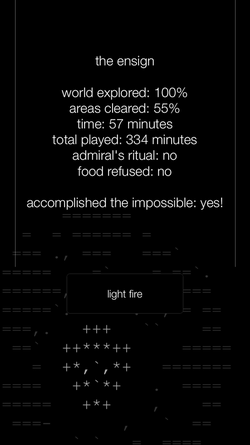 Brian: What advice do you have to aspiring indie developers out there? Amir: Start small, get something out the door in 6 weeks. Then iterate. [I] did this Reddit post that goes into details about it. [Given] all the choices, you can get analysis paralysis. So start with that [post]... build something text based even :-D Brian: Other than StarCraft and LoL, what are some of your favorite and most influential video games, books, and movies? Brian: I was so happy when FF Tactics was released for iOS. The perfect excuse to play it again. Amir: Yep! I really want a PvP based game around that concept. The storyline of the game was so great. Brian: I want to finish the interview by just reading you a few, nice quotes from the App Store:
Amir: Those reviews are the strongest reason for me to keep building :-) It's the best thing in the world I tell ya. And I'm hoping with ANC people will be more receptive to "unfinished games for now but I'll keep working on it" kind of approach to development. Seems to work well for that game at least. Brian: For me, it worked. Amir: [I'm Releasing] an update to that today by the way :-) You finally get to slide "bounce" into the lab. Brian: I'll check it out! Thank you again for joining me for this interview. I really appreciate you taking the time. And I'm looking forward to your future releases. Amir: I love this stuff...thanks for reaching out Brian, and please gift my games to your friends and family ^_^ and tell them to pay it forward if they liked it. In Evoland, you experience the evolution of RPGs by frequently unlocking new features (e.g. weapons, radar, and a mini-game), technology (pre-rendered environments, 3D, colors), and design elements (e.g. puzzles, combos, and secrets). Cliches are ingrained in every moment. Yet cliches don't feel like cliches, but rather they evoke the warming sensation of nostalgia. The experience is more akin to a history lesson, or a virtual game museum, than a standard RPG, sprinkled with jokes and jabs at moments and characters made famous by games like The Legend of Zelda, Diablo, and Final Fantasy VII.
The experience is short, making this less of a complete RPG and more of a brief walk through time. Essentially, Evoland is a taste of the integral pieces that have been built over the many years. Yet the foundation is so solid it beckons for a story-driven sequel. The Walking Dead: Michonne, a three episode gaming experience, is the most recent The Walking Dead edition from Telltale Games. It follows a similar structure as the previous titles, yet falls short of emulating their success primarily due being limited in time, depth, and character development.
Pros
Cons
Summary All in all, Michonne doesn't have the same gritty and dark feeling of previous iterations, which is mainly lacking due to the short experience that doesn't allow for true depth. The game really feels like it is about to take off right as it is ending. In no particular order:
• Evoland - Evolve from GameBoy to PS1 • Dragon Quest VIII - It’s 3D • Venture Kid - Essentially old school Megaman • Battleheart Legacy - Missing the story element, but a fun action/adventure RPG • Device 6 - Unique puzzle/mystery game • Final Fantasy 6 - Classic goodness • A Dark Room - It will make you question yourself • Walking Dead: The Game - Deep, dark, gritty, and an emotional rollercoaster • Zombie Highway: Driver’s Ed - Strangely addictive • Final Fantasy Tactics: The War of the Lions - Classic strategy, tactical RPG • Year Walk - Like living in an old, dark, European story book where the environments and creatures are as scary as they are bizarre • Shining Force - Another classic, turn-based tactical RPG • Superbrothers: Sword & Sworcery - Beautiful design with an amazing soundtrack • Orbital - Incredibly simple design done right • Kingdom Rush - Fun, silly, and strategic Recently I wrote a post about my love/hate relationship with the game The Walking Dead: No Man's Land. As part of that post I offered a list of design ideas, and today I want to expand that list with some additional thoughts. Since writing that last post a ton of work has gone into improving this game, which I applaud, and I hope the momentum can continue forward. I also hope some of my ideas are helpful to the developers (if they see this). New ideas:
Ideas from previous post:
I want to love this game. I really do. I’m a huge fan of the Walking Dead comic and show, as well as the zombie genre as a whole. But this game…oh this game. A mixture of the now cliche Clash of Clans style freemium gameplay mixed with the tactical strategy games of old, The Walking Dead: No Man’s Land feels like an ongoing experiment in bad game design, put forth for all to cringe at as the developers slowly massage it into something presentable. Yet beneath the layers of grinding and clicking is the framework for something special. Something that desperately wants to come to life. There is so much room for growth, however, in its current form, The Walking Dead: No Man’s Land is a menagerie of lackluster, unbalanced, and lame design decisions, sprinkled with obnoxious pop-ups and ads. The pie chart below shows how I find my time is typically spent in this game, with an explanation of each slice. At a high-level, you will notice a trend where I argue that the most interesting features are where you spend the least amount of time, and vice-versa, which is primarily a failure due to the lack of content and feature diversity. Upgrading - Behind the safety of the town wall, players can build crops, storage areas, and stations for upgrading players and gear. While on the outside of the wall, with a recently added feature, players can now add and upgrade a walker pit. Supplies are spent to upgrade buildings, gear, and characters. Supplies which are obtained overtime and by scavaging. After the first couple of days of play I found that building and upgrading is an activity that is extremely infrequent, even after spending hours grinding to gather additional supplies. Story Mode - The story mode is, by far, the most interesting aspect in the game, and unfortunately it’s what players will find they will spend only a tiny fraction of time participating in. What gets so utterly frustrating about the story mode is how infrequent it can be played, because the difficulty curve is an insanely steep arch. Rather than including more levels that can be played more frequently, the developers opted for a drought of content that is stretched so thin that it cannot even be enjoyed. Raiding Outposts - Every time there is an update I get excited again, hoping for some fun, new features. And occasionally there are new features that, unfortunately, always feel flat, like a quarter of an idea, birthed from the womb far too early. Outpost raiding is one of those recent additions, where players build their own defensive outpost and raid the outposts of others in search for yet another type of resource. Raiding feels far too formulaic, not only in the limited environments, but in terms of strategy as well: kill the walkers, which charges your special skills, then unleash a flurry of your skills on the human enemies. Grinding
In short: great framework, terrible design, obnoxious ads, and an extreme lack of unique content. Next, I want to offer up some suggestions, that I feel could greatly improve this game:
I’m at that point again where I’m ready to, once again, uninstall. I’ll check back in again, one more time, and hope the positive elements of this game have been amplified, and the negatives have been sorted out. I grew up playing Dragon Quest games (or Dragon Warrior as we knew it here in the states) on the NES, which for me and many others, was an introduction to the console world of RPGs. At the time, I had a vague understanding of dungeons and dragons, had seen fantasy movies, and had read the Hobbit, so this type of world, at this point, was already very appealing to me. But after the NES days, I never experienced the later iterations of Dragon Quest, as they somehow fell off my radar. Fast forward to 2016, and we now have a collection of these games available on the iPhone. Many balk at the mobile price tag for this game, accustomed to 99 cent titles and modern, freemium games. What they don't realize is that this is a deep experience, packed with content that you don't get with most modern, cheap games (and unlike many modern mobile games, there isn't any in-game purchases). I recently completed the game, and am listing out what I feel are the "good" and the "bad" of DQVIII. Of course, I am omitting critiques one would make with modern games, this being about 12 years old. However, I am including criticisms about the platform of which I experienced it on (the iPhone 6s). Lastly, be aware that there are light spoilers below, although nothing that would ruin the experience. The Good
The Bad
Battleheart Legacy is a fun, action RPG, dungeon crawler, filled with campy humor, clean visuals, and interesting layers, but with some missed opportunities. Gameplay & Combat As with many RPGs, you can customize your equipment layout in order to maximize your skill set, such as by equipping weapons and armor that raise intelligence for spell casting. You aren't forced to pick a specific class, such as rogue or bard, and can actually mix skills from various classes to make for interesting battle combinations. At first I dabbled in a variety of classes and skills, in order to feel them out. My focus eventually was on the ranger class, with supporting skills mainly from the bard (charm) and necromancer (skeleton minions). The battle system is seamless and easy to learn. Details like being able to queue up your next ability while your current ability is being initiated allows for a smooth combat experience. However, combat becomes quite repetitive after a while. At first, a new combination of skills and fighting new enemies makes for a dynamic battle, but once you settle into your favorite skills and have learned how enemies behave, the battles get stale and formulaic. Progression The biggest issue with this game is the lack of activity and content starting around level 18, which left me attempting dungeons prematurely and battling in the arena with little success. I found myself slowly grinding to gain experience, replaying previous dungeons or getting smashed in high level ones. And this process carried on until the very end of the game. With just a little more content sprinkled in from level 18-30 the game could be infinitely more enjoyable, as it would maintain the steady cadence that the first half of the game provides. When you traverse the world map, you sometimes get drawn into random encounters. Unfortunately the enemies do not scale in terms of difficulty, so you will quickly be one-hitting baddies. Having scalable world map battles would also help solve for the lack of content in the latter half of the game that I mentioned above. Story There's not much story in this game; Don't expect to see a complex backstory to accompany our hero. In fact, don't expect any backstory, and don't expect him to be much of a hero either. There is some information here and there about the kingdom and history, but it's incredibly minimal. Overall, the major lack of story is a huge, missed opportunity. The only character defining elements in this game are the moments when you have the option to be nice or mean, which can translate to a sassy response or killing a stranger begging for mercy. Bugs & Suggestions
Summary I really enjoyed this game, at least at first, and then I got frustrated when the content got thin and combat got stale. Overall, its an enjoyable title that's worth checking out, and I'm eagerly hoping for a sequel that leverages the structure that has been created here, but with more content and preferably some story as well. On the surface Oceanhorn: Monster of Uncharted Seas is a Zelda clone, but unfortunately it feels like our newborn clone came out of the lab a little too early and with only a fraction of the charm and complexity that we all come to expect from the Zelda series. Simply put, it's a watered down version. Let's take a closer look at the various elements that make up this game and examine where it feels flat (warning, some spoilers ahead): Story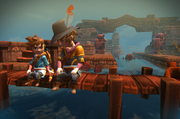 The game begins with the main character's father leaving to battle the ancient monster known as Oceanhorn and ends with father and son reuniting. The relationship between father and son, while cliche, is an obvious opportunity for interesting story telling, and Oceanhorn completely fails to write their story to be any more than 'dad leaves, son finds him and defeats monster, both are together again'. Seriously, it's that simple. You won't find any emotion in either of these characters, or any of the hollow characters in this game for that matter. For example, the son could have had a complicated daddy complex, thinking that his father abandoned him, with dad's sudden disappearance being misunderstood. Instead we have a father that left to fight a monster, leaving a clear journal behind (no mysteries here) and when they are reunited the dad just spews out some light history of the world instead of exhibiting any ounce of emotion. What we have here is a very generic, linear story with our hero catching up to his dad and defeating a big monster. The overarching story is that the world is not what it used to be and the only way it can be restored is to defeat Oceanhorn. Yet, other than the aquatic half-human half-fish people who claim the open sea is too dangerous for them to swim out in, everyone seems very normal and extremely happy in the game, hardly a group of oppressed people in a dark world. The town people freely wander about their island, run shops, and even hold a joyous festival. Boats pass you in the open sea and relay cheerful messages in your direction as you sail past them. It's almost as if the person that wrote the primary story and history for the game forgot to coordinate with the person that wrote the character dialogue and events. Gameplay & ControlsThe controls were relatively easy to get used to, and with the exception of sometimes directing my character slightly in the wrong direction I found them to be fairly seamless. And the controls are pretty basic, primarily consisting of moving the character, an action button (attack, grab, talk, etc.) and a secondary action such as your shield or bombs. The battles between common enemies become repetitive very quickly and require little to no tactics: you swing your sword or you throw an object at them. The world is comprised of a series of islands which are fragmented by open water. The player uses a small sailboat to traverse between the regions, and during travel some bombs and enemies occasionally (and in a very formulaic way) appear straight ahead of the player, which must be blasted out of the way with a pea-shooter. The process of traveling between islands, something that could have included interesting quests and moments of exploration, is instead filtered down into a boring mini-game that the player is forced to repeat over and over. EnemiesAt a point in the game I earned an achievement for having seen all of the enemies, and usually when I get an achievement I momentarily feel a sense of satisfaction, but in this case I instead felt a great disappointment, thinking to myself "really, that's the last unique enemy I'm going to see in this game?" With only a handful of baddies the world felt rather small and uneventful, and with their limited AI I often felt like I was fighting only two enemies the whole game: the ones that charge directly at me and the ones that zigzag a little then charge at me. There are four or five boss battles, all with a winning strategy that is discovered rather quickly. Toss bottles at this guy, block lasers with your shield against that guy...you get the point. The boss fights aren't terrible, they just aren't very fun or interesting either, and are yet another missed opportunity in this game. Items & Weapons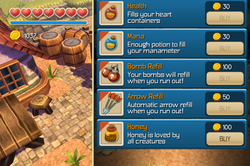 The weapons in Oceanhorn are what make for the most similarities to Zelda (arrows, bombs, and even a sword that shoots magic when your hearts are full), not to mention other cloned items such as quarter heart pieces you collect to make a full heart container. One strange item worth noting is a flute that you receive near the end of the game. The item itself isn't strange, but rather the odd way it is just thrown into the game is what really felt odd and lazy. The flute is in the final dungeon, sitting out in the open, on a narrow pathway that the player has to pass through. It really feels like the developers decided to add in the item after they had already fully planned out and started to develop the environments. In other words, it is as if the developers had this conversation:
Following the theme of content that isn't quite fully thought out are the coins that are collected by chopping down bushes, defeating enemies, or discovered in treasure chests. Coins (or a like form of currency) are extremely common in RPGs and usually provide for some added depth and customization, allowing players to purchase upgrades, refill items, unlock rare content, bribe guards, or change the appearance of a character. But in Oceanhorn instead you get only one shop with many near useless items and only one item worth purchasing, which is a heart container. Why would I spend coins on a potion that immediately refills my health or mana when I can quickly refill them by slashing down a couple of bushes next to the shop? Instead, a useful, similar item would be health and mana potions I can carry with me and use at a later time, such as when I am battling a boss and am in desperate need of a refill. In the end I had over a thousand spare coins and nothing interesting to spend them on, making me feel as if the time I took seeking out the various chests in the game was rather pointless. Town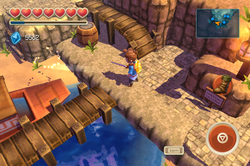 There is one town in Oceanhorn, consisting of one shop, some houses, people milling about, and some dungeon elements. This is where I expected to gather side quests and missions, the content meat that fits snugly between the bread that is the story arc. Fitting with the lacking content theme of this game I became rather displeased upon the realization that there is basically only one side quest in the entire game, and it is to collect red rocks to be later returned for a single prize. I enjoyed seeking out the red items, which forced me to fully explore each environment, but of course wished to see additional quests. Dungeons & PuzzlesThe dungeons and puzzles are both repetitive and predictable, only increasing in complexity or difficulty in a few select places. Most puzzles consisted of stepping on a button (or placing an object on a button) which opened a nearby door. I did this same, lame "puzzle" so many times that I would walk into a room and hope that this is going to finally be the point where something unusual happens, but it just never came. Instead I would approach a puzzle and even for the ones that were slightly more complicated than the typical button press were usually so simple that the instant resolution that popped in my head was always the correct, and simple, solution. In the end there were zero thought-provoking puzzles, and referring to them as puzzles is an injustice. The massively unfortunate part is that the mechanics needed for generating more interesting challenges were already present in this game, so the primary blame, in my eyes, is on the designers that did not take enough advantage of the tools available. For example, some puzzles involved the player pushing a box aside to reach the other side, and in almost every case the player had to only push one box to get past. Why not have the player push multiple boxes in a unique combination in order to reach their goal? And with a little extra work the puzzles could have been greatly expanded, such as actually making a puzzle-tied use for the freeze spell, which was something I earned in the game and never used (literally never). DifficultyCombine the simple puzzles, easy combat system, and straight forward story and you have a very easy game. A player can refill his or her hearts with ease by breaking a few bottles or cutting down some bushes (which are everywhere) and losing to an enemy is a rarity that should only occur when a player is looking up from their iPhone to glance at the real world. Summary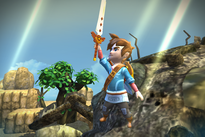 Overall, Oceanhorn feels rushed and simplistic. While it has the framework of a good game it came up short due to a lack of content, a lackluster story, and predictable elements throughout. The fact that this game borrows so many core elements from Zelda is not the reason why this game fell short for me, as I was actually excited to play something Zelda like on my iPhone, but rather the laziness that this game embodies ruins what otherwise is a decently structured game with a poor execution. |
AuthorBrian Riggsbee lives in San Francisco CA. He enjoys gaming, writing, creating art, practicing Brazilian Jiu-Jitsu, chasing adorable dogs, and spending time with his wife and boy. Categories
All
Archives
December 2022
|
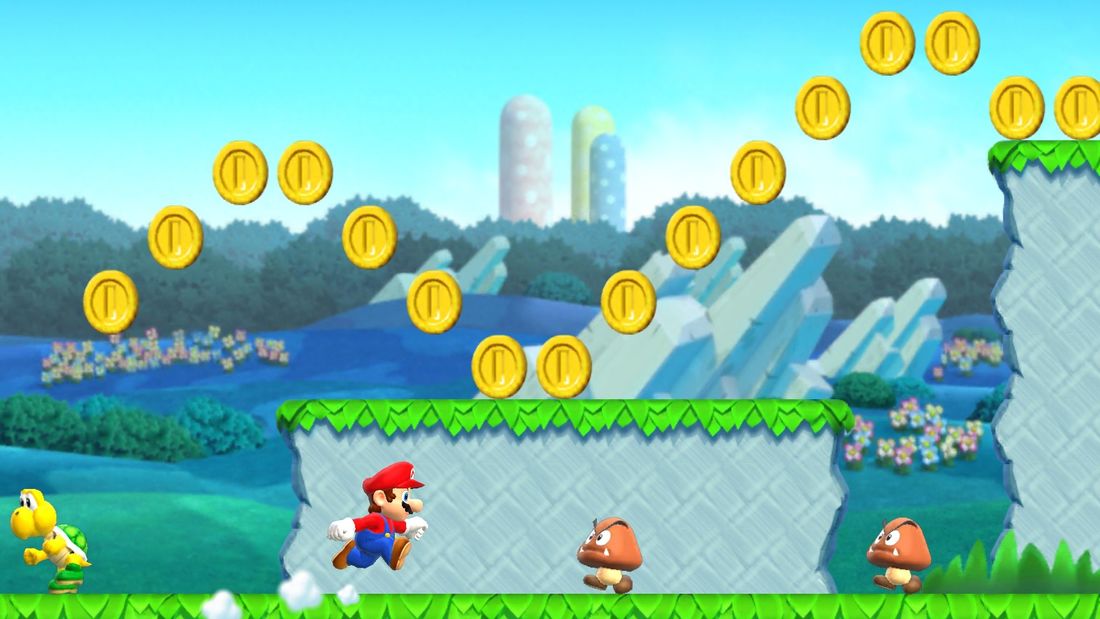
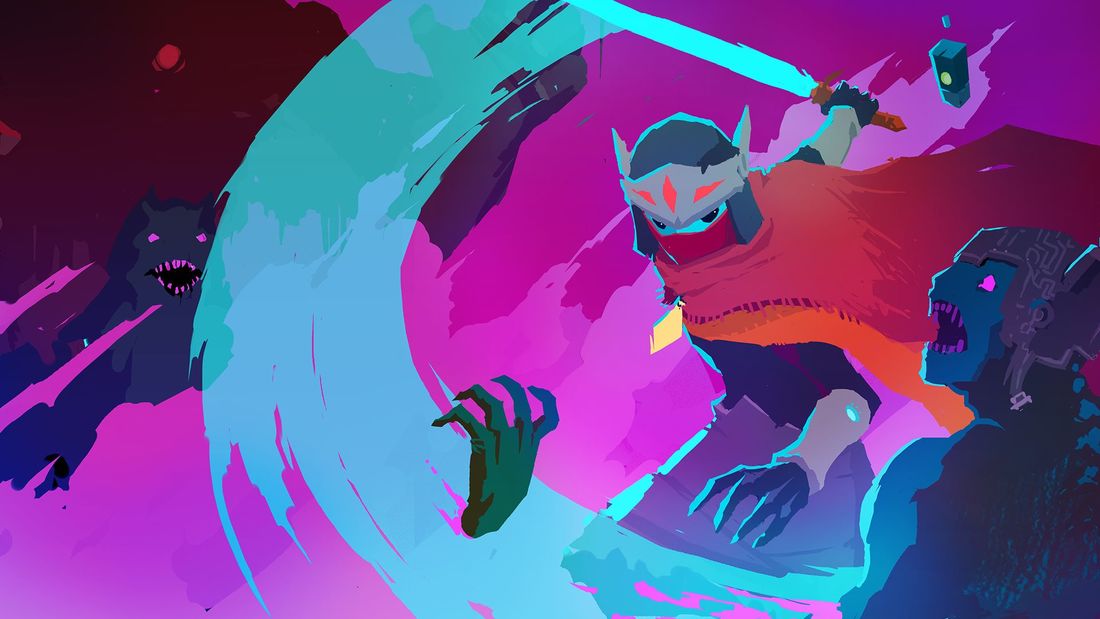
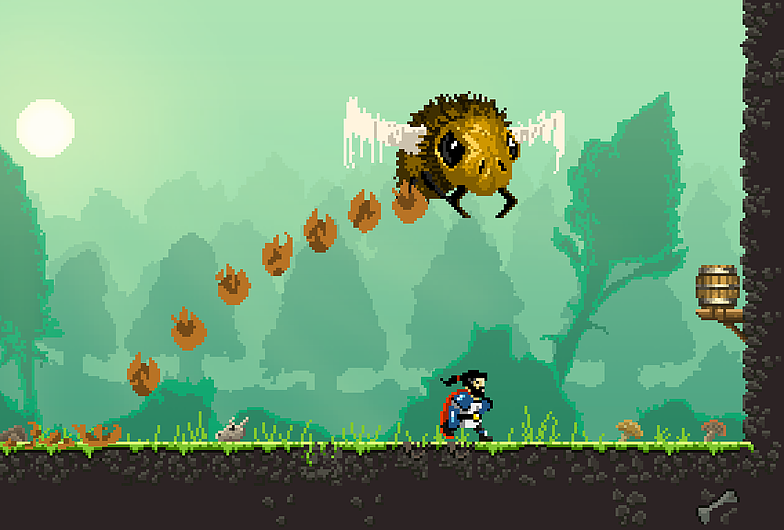
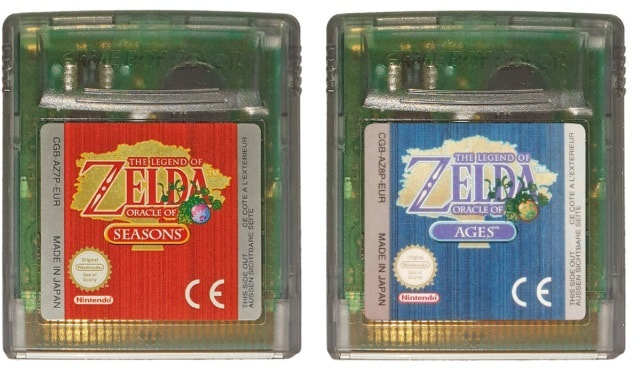
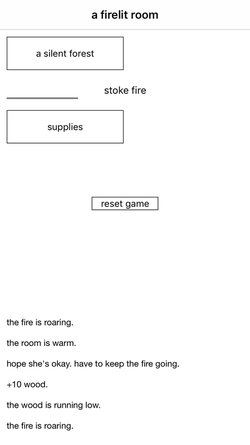
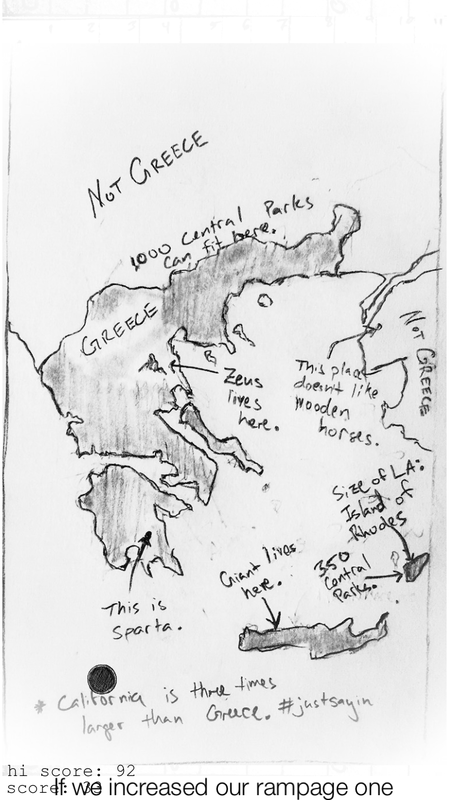
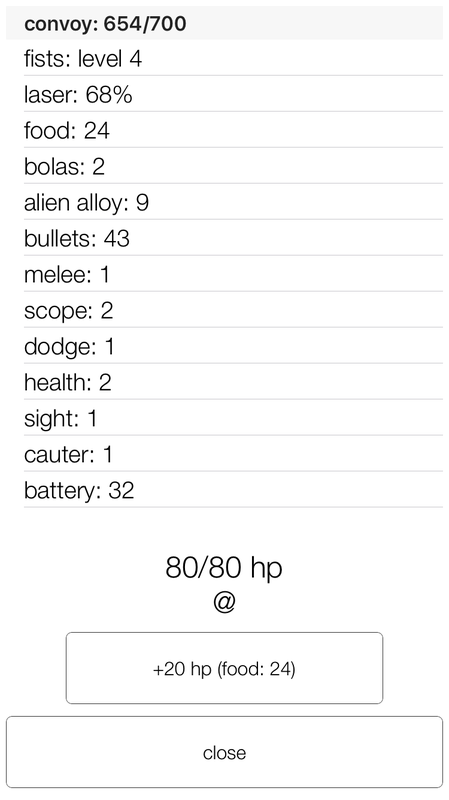
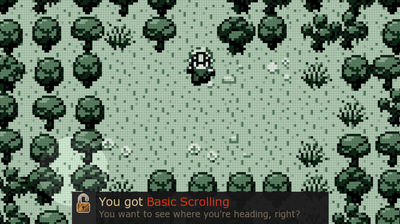
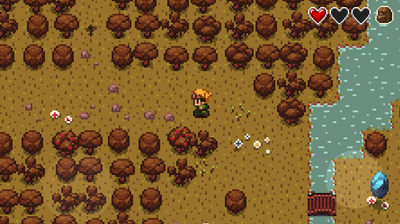

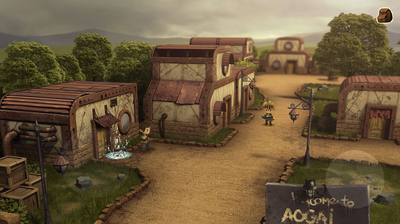
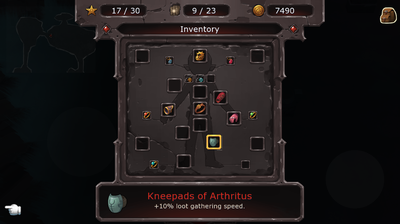
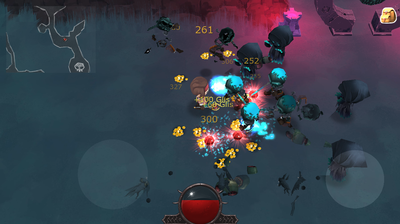
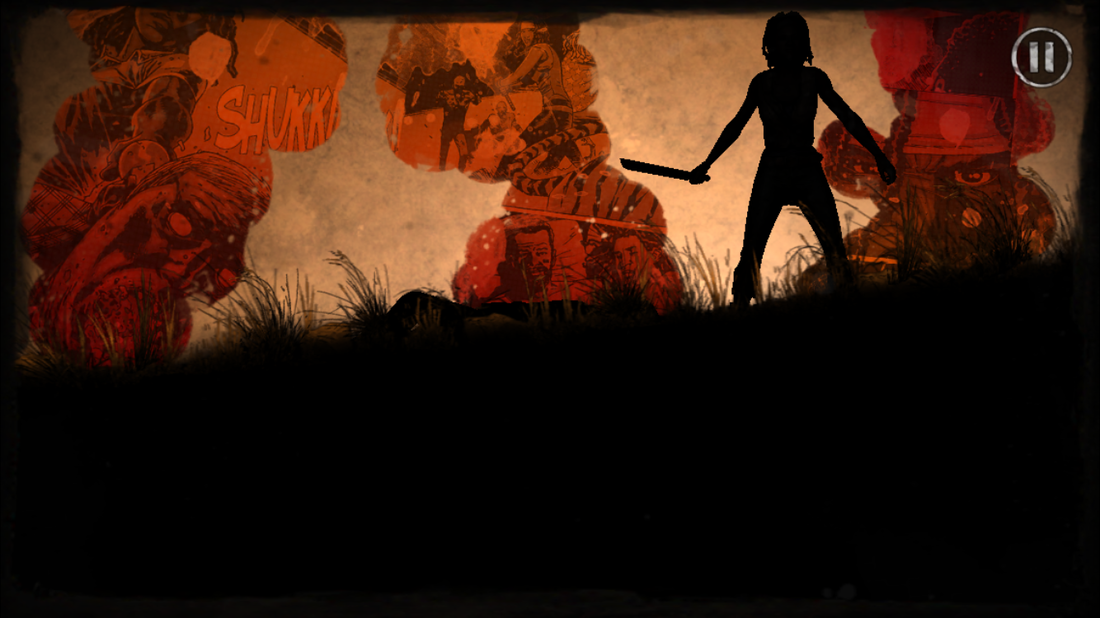
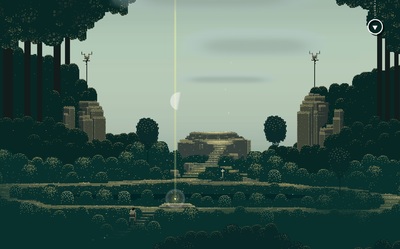
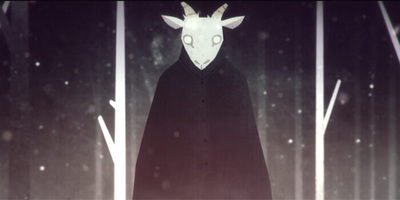
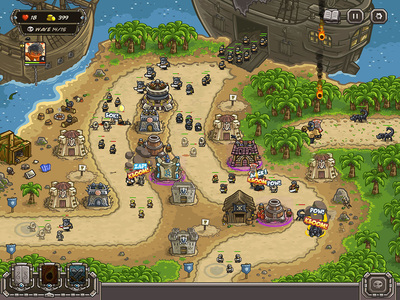
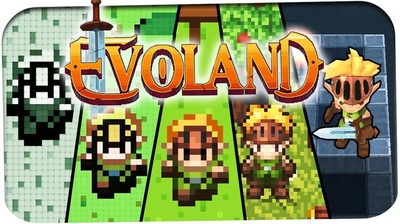
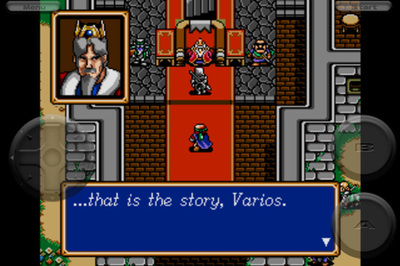
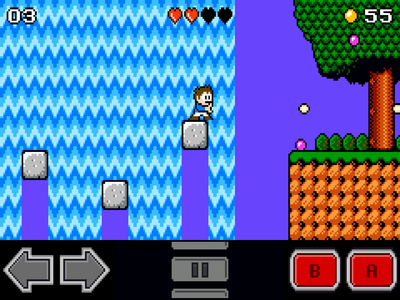
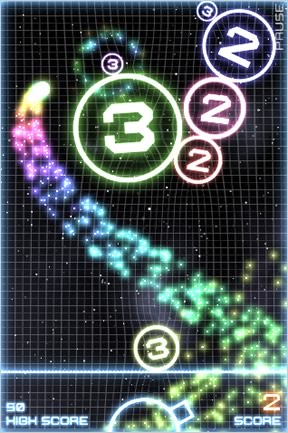
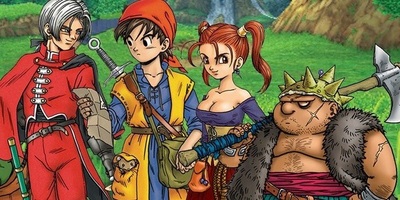
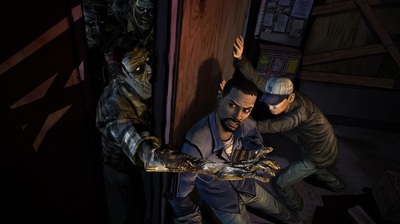
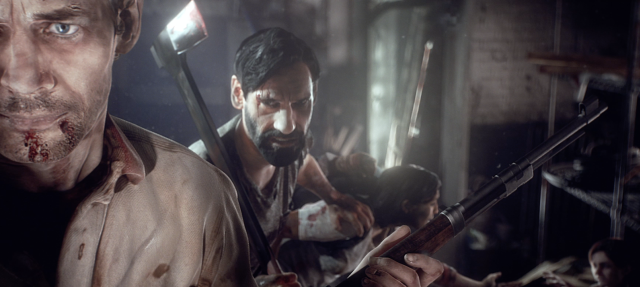
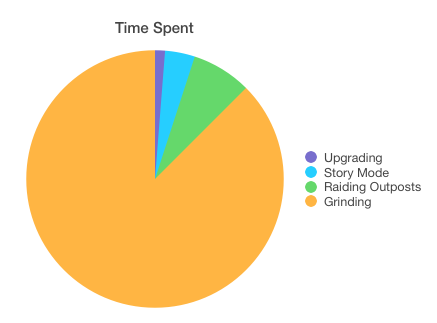
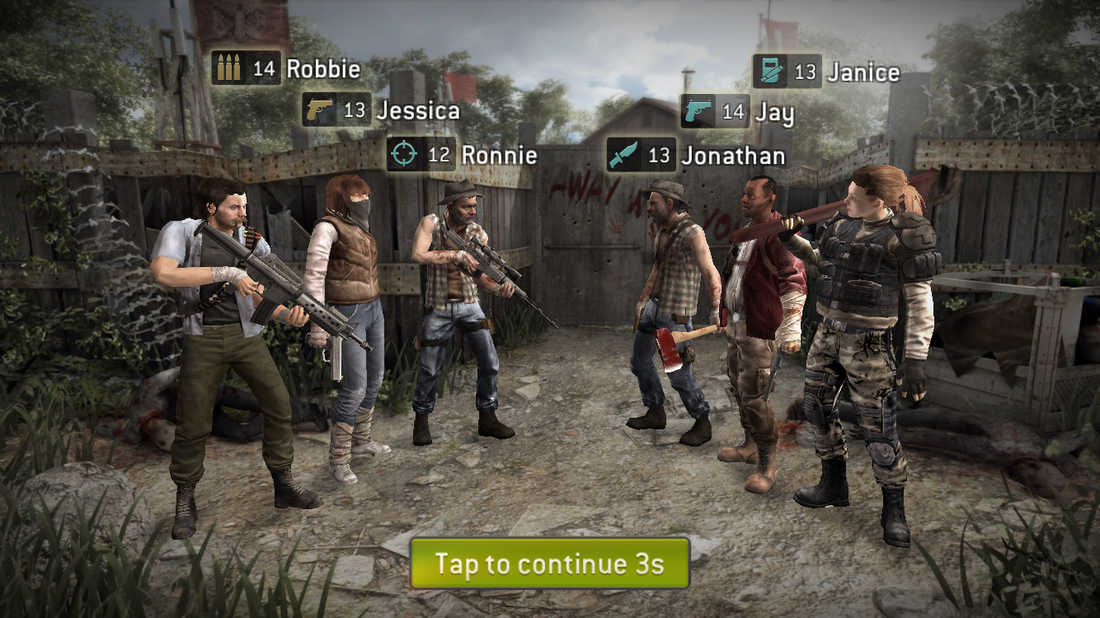
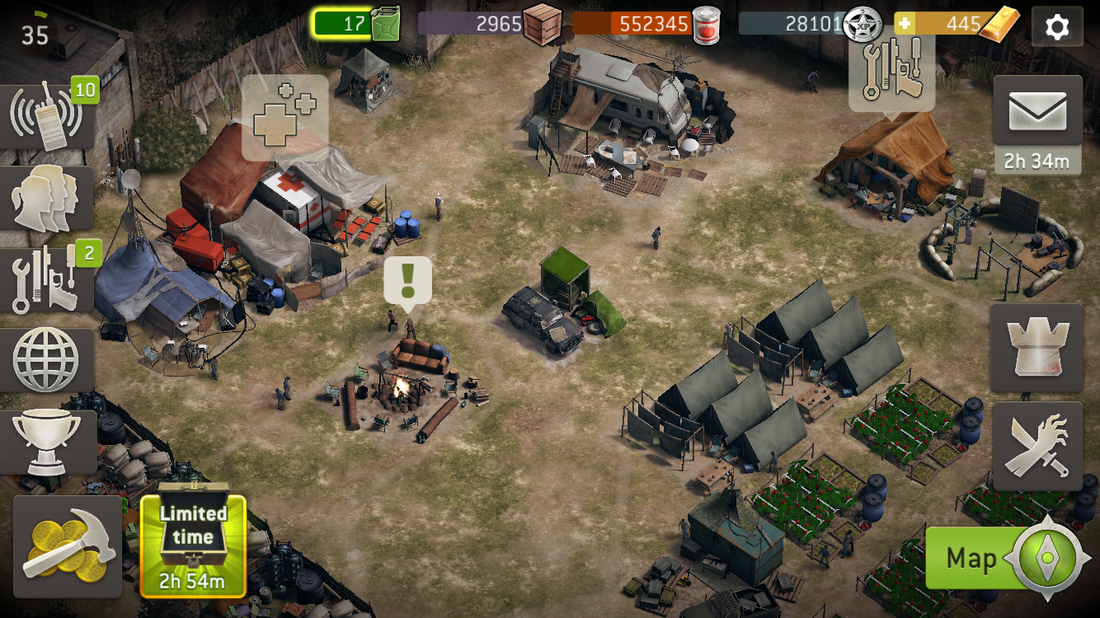
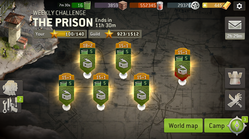
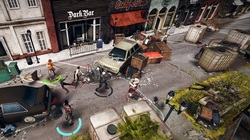
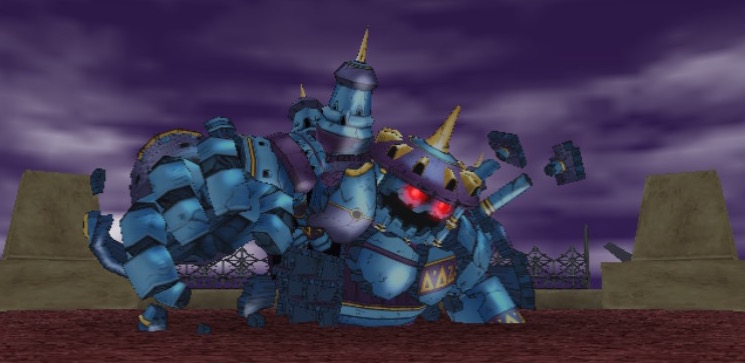
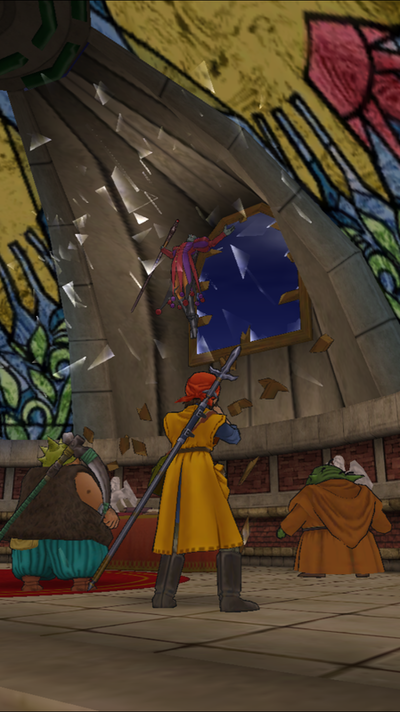
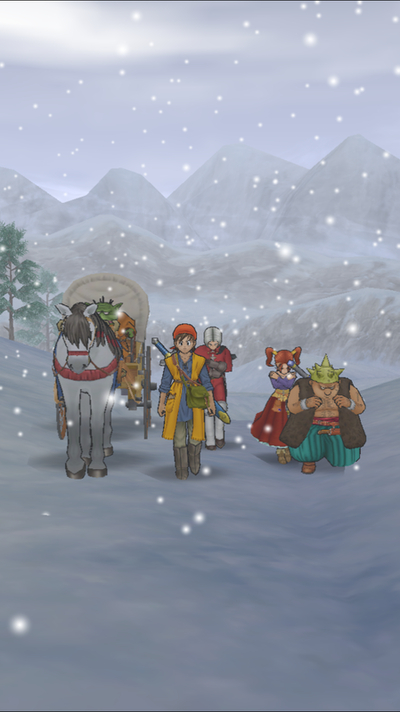
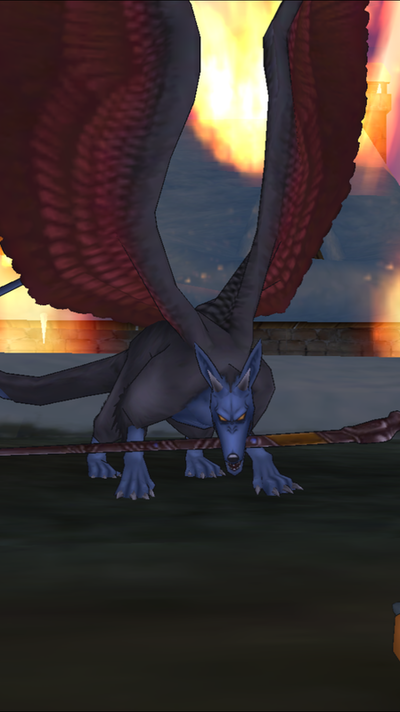
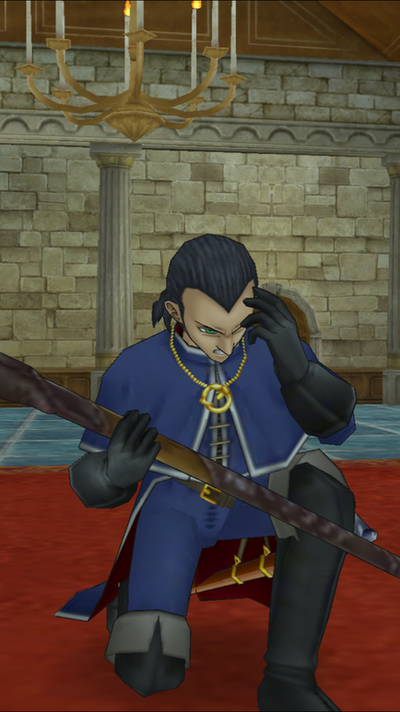
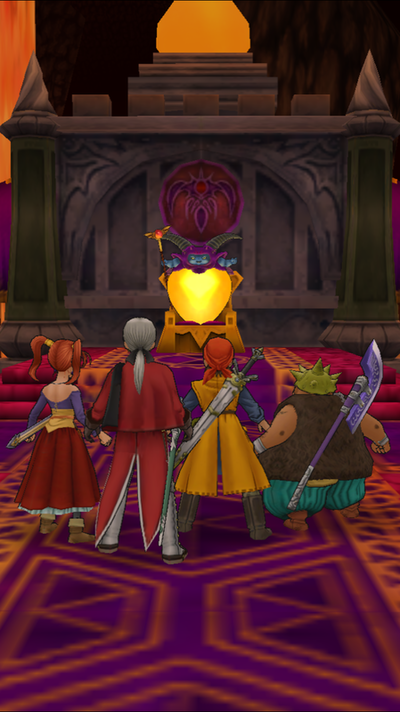
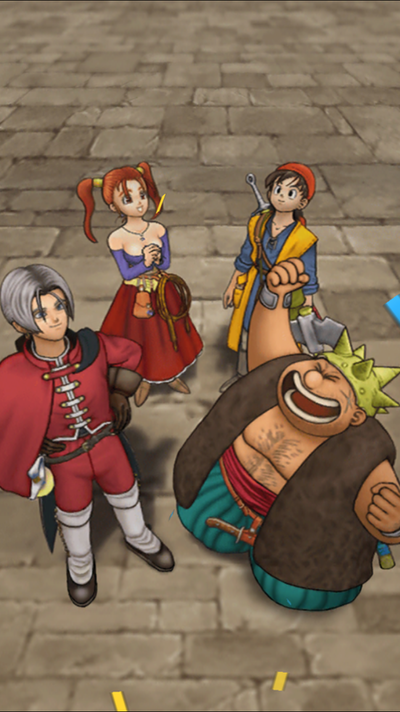
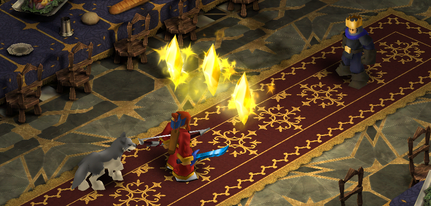
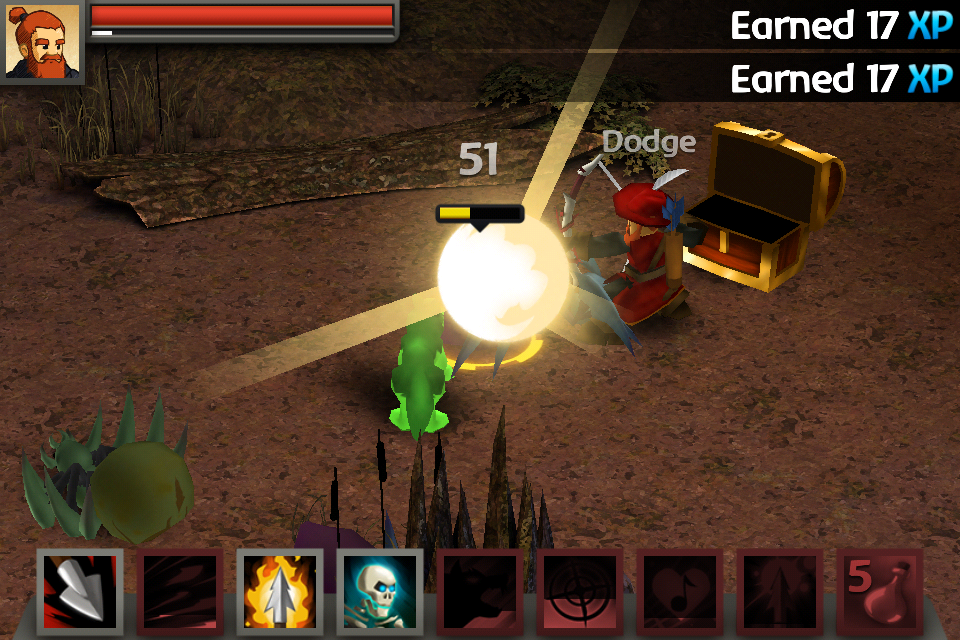
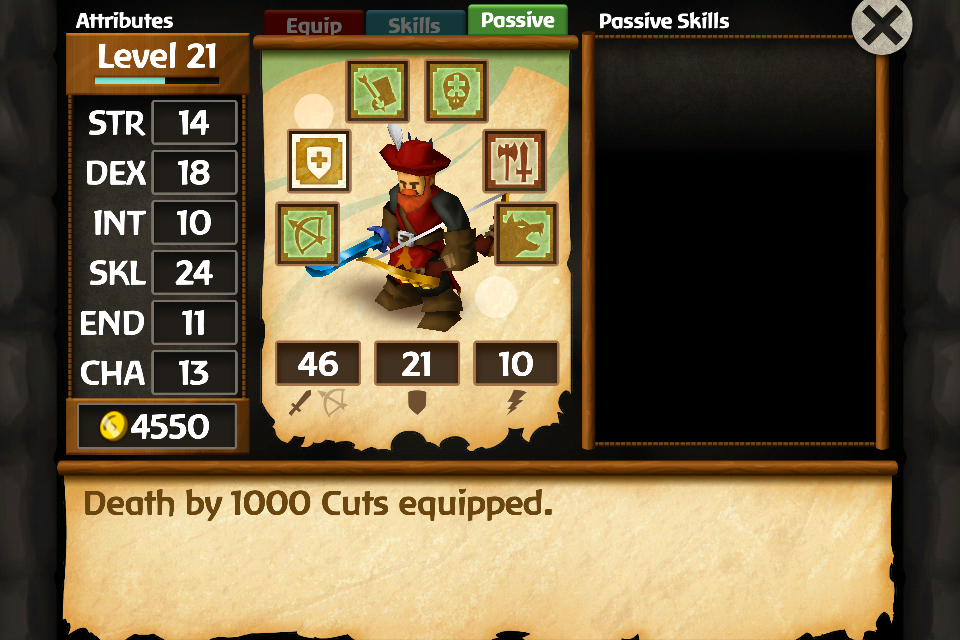
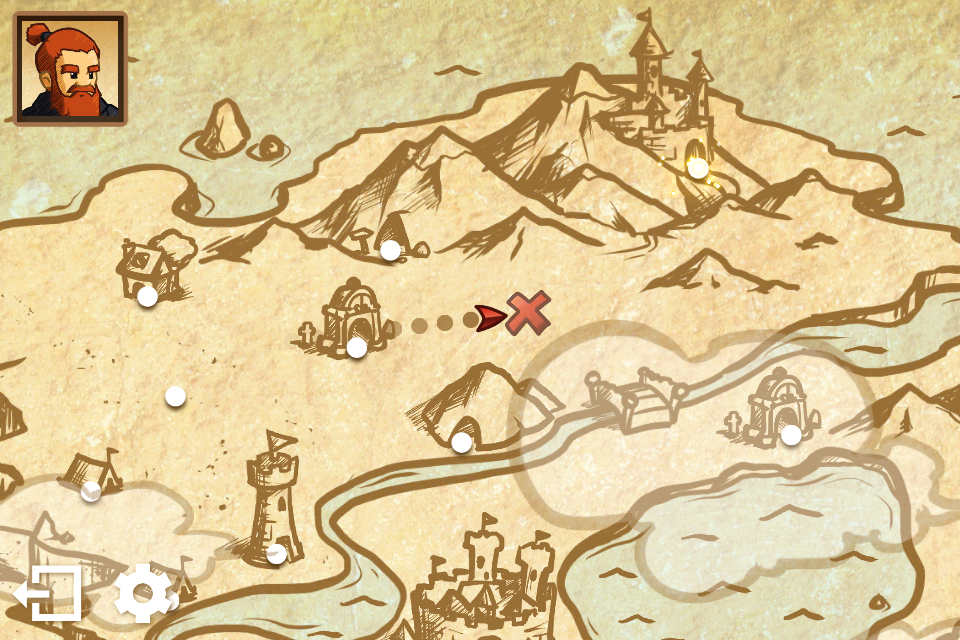
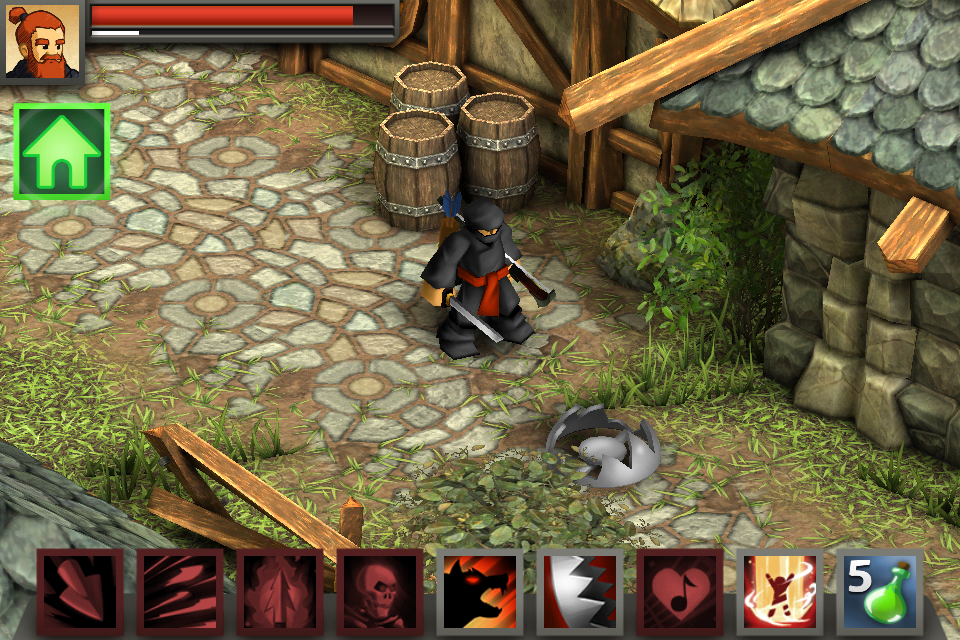
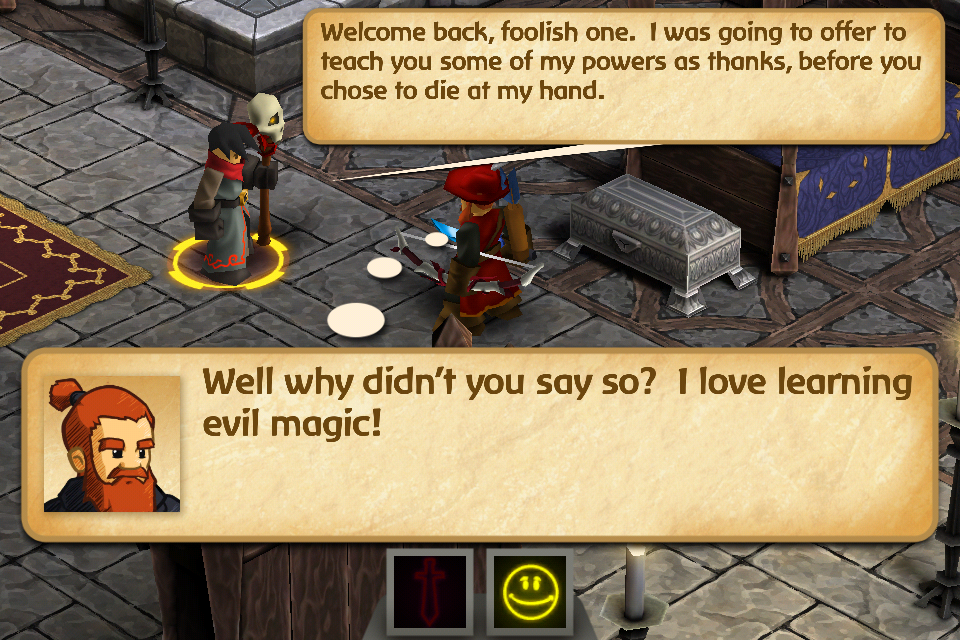
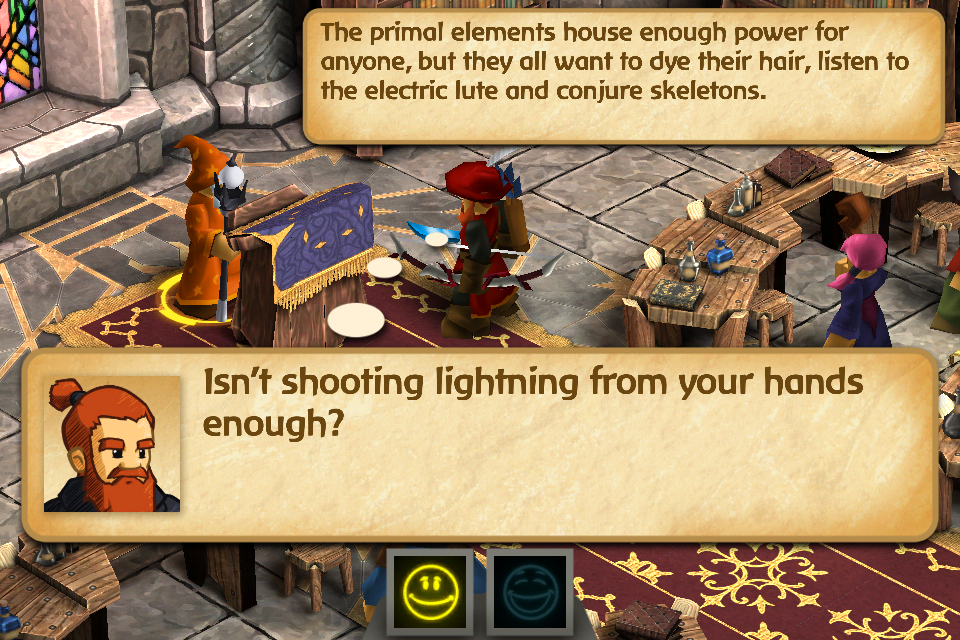
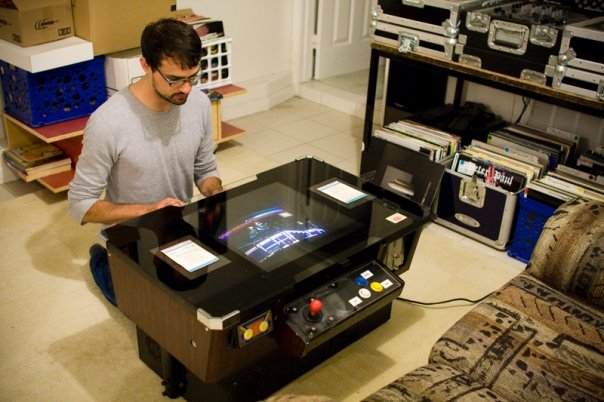
 RSS Feed
RSS Feed